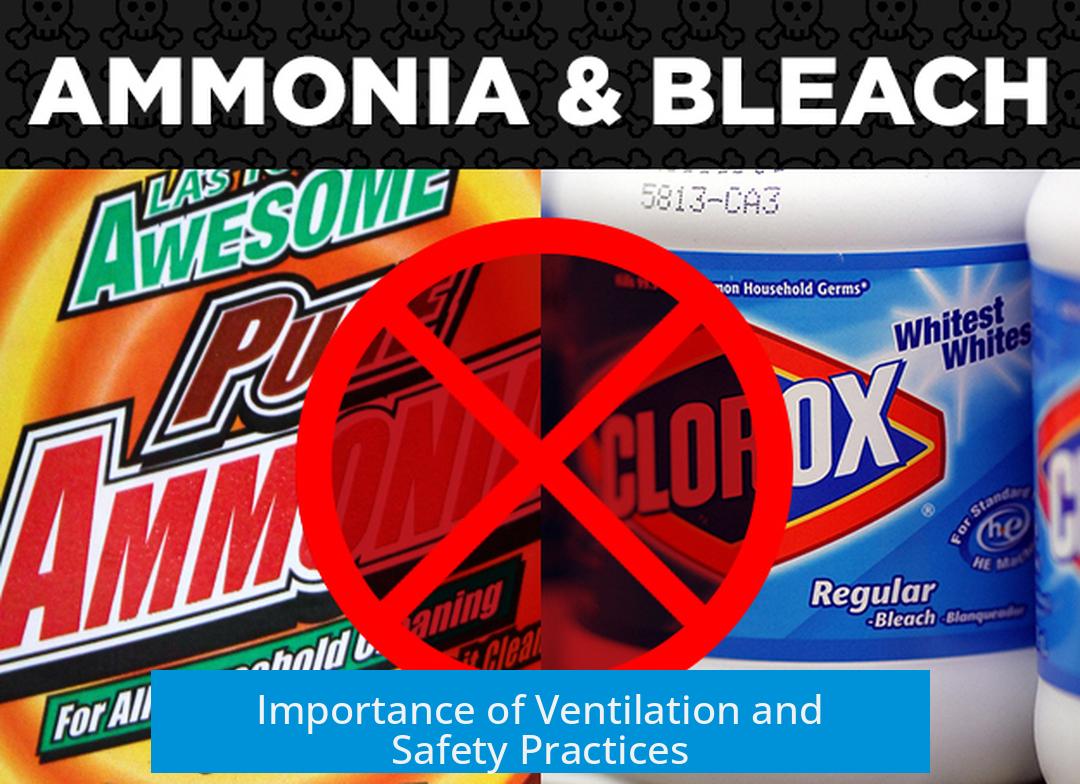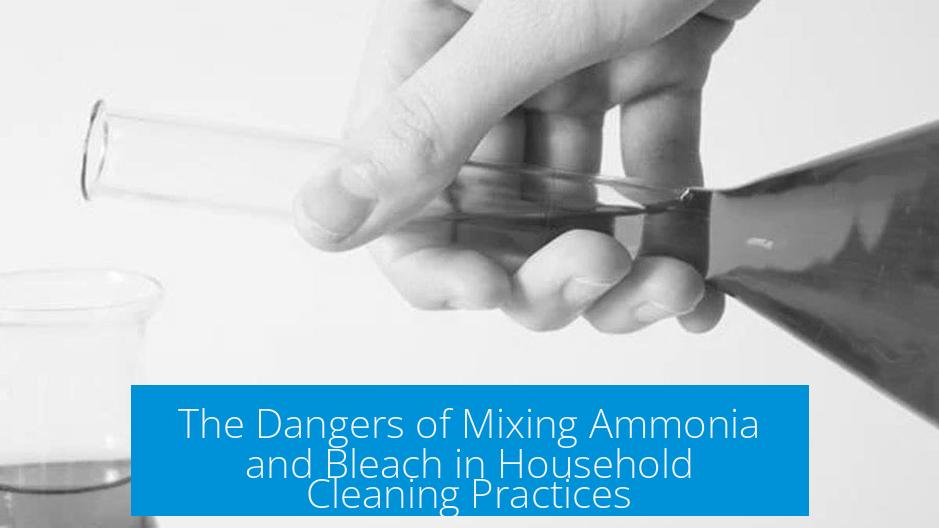Why Mixing Ammonia and Bleach Is Hazardous

Mixing ammonia and bleach to clean surfaces creates toxic gases harmful to health and reduces cleaning effectiveness.
This common but unsafe practice involves complex chemistry with dangerous outcomes. It is critical to understand the risks to protect anyone exposed, especially vulnerable family members like grandmothers.
Chemical Reactions and Toxic Byproducts
When household bleach, which contains sodium hypochlorite (NaOCl), mixes with ammonia (NH3), it produces chloramines, chlorine gas, and sometimes hydrazine. These are strong respiratory irritants and toxic gases.
- Chloramines: These nitrogen-chlorine compounds cause coughing, shortness of breath, chest pain, and irritation of eyes, nose, and throat.
- Chlorine gas: A highly reactive and toxic gas that severely damages lung tissue.
- Hydrazine: A carcinogenic and highly toxic chemical that can form in small amounts.
The irritation from chloramine gases is noticeable by discomfort in the sinuses and lungs almost immediately after inhalation. More severe symptoms can occur with increased exposure or concentration.
Health Risks and Potential Exposure
Breathing these gases is very dangerous. Exposure causes coughing, burning eyes, wheezing, and difficulty breathing. The lungs may sustain lasting damage, especially in older adults.
The risk increases significantly when scrubbing surfaces on hands and knees near the mixed liquids. Gases concentrate near the source before diffusing. Prolonged inhalation may cause pulmonary edema, delayed respiratory problems, or in extreme cases, death.
Household concentrations are usually lower than industrial levels, so short exposure with good ventilation rarely causes permanent injury. However, any symptoms after mixing should prompt immediate ventilation and medical attention if breathing problems persist.
Importance of Ventilation and Safety Practices

If the area has windows and fans to ensure airflow, the dangerous gas concentration dissipates quickly. Always open windows, turn on exhaust fans, and rinse surfaces thoroughly with water after cleaning.
Maintain adequate ventilation during and after cleaning to prevent gas buildup. Avoid mixing these chemicals altogether to eliminate the risk.
Impact on Cleaning Effectiveness
Reduced Cleaning Power
Mixing bleach and ammonia reduces both chemicals’ effectiveness. Instead of disinfecting or removing stains, they react with each other and lose their cleaning properties. This is counterproductive for surface sanitation.
If this combination were effective, manufacturers would sell pre-mixed products. In practice, using either bleach or ammonia alone provides better cleaning results.
Behavioral Advice in Household Contexts
Older adults, like grandmothers, often use traditional cleaning methods passed down over decades. Changing these habits requires patience and calm explanations rather than confrontation.
- Explain the risks clearly without alarm to encourage safer cleaning.
- Offer alternatives: suggest using only bleach or only ammonia, never together.
- Consider physically removing one product to preclude accidental mixing.
- Respect their experience but prioritize safety with gentle persistence.
Physical Effects of Ammonia and Bleach Mixture on Surfaces
Material Compatibility
The bleach and ammonia mixture does not damage common tub materials like ceramic, porcelain, fiberglass, or pewter. These materials resist oxidative and chemical attack from diluted household cleaners.
Rare exceptions could include copper washtub interiors; copper reacts with ammonia creating characteristic green-blue corrosion over long exposure. However, this is uncommon.
Corrosion of Metal Fixtures
Metal parts exposed to the mixture may lose their chrome plating, revealing brass or copper beneath, which ammonia then corrodes. This causes discoloration such as blue-green patinas on drains and fixtures.
Although this type of damage is mainly cosmetic, it might necessitate replacement or repair for aesthetic reasons. Special metallic paints or coatings can temporarily restore appearance.
An Anecdotal Warning on Safety
Real-life stories underscore the danger. One individual recalls inhaling fumes from this mixture in a grandmother’s bathroom and experiencing severe respiratory distress. Emergency hospital care was required.
Such incidents are examples of the risks turning deadly. The gases released share properties with substances like mustard gas used historically in warfare, known for lethal respiratory effects.
Humorous remarks among some about “witch-poison” highlight popular awareness of toxicity but should not downplay the very real health consequences.
Summary of Key Points
- Mixing ammonia and bleach produces toxic gases (chloramines, chlorine gas, hydrazine) harmful to lungs.
- Exposure causes respiratory irritation, difficulty breathing, and permanent lung damage in some cases.
- Good ventilation reduces risks, but complete avoidance of mixing is safest.
- The mixture reduces cleaning efficacy; using one product alone is preferable.
- Metal parts may corrode and discolor, requiring maintenance.
- Changing habitual practices in elderly relatives demands patient and calm communication.
- Any symptoms after exposure require immediate ventilation and medical consultation.
Why is mixing ammonia and bleach dangerous?
Mixing ammonia and bleach creates toxic gases like chloramines and chlorine gas. These gases can irritate your lungs and sinuses. Breathing them in, especially in high concentrations, can harm your health.
Will mixing ammonia and bleach improve cleaning results?
No. Mixing them actually reduces cleaning efficiency. The chemicals react with each other instead of cleaning surfaces. If it worked well, companies would sell pre-mixed products.
Can the ammonia-bleach mix damage bathroom surfaces?
The mixture won’t harm most surfaces like ceramic or porcelain tubs. However, it can corrode metal parts, causing discoloration and damage over time. The corrosion affects metals under chrome layers.
How can I safely handle my grandmother’s cleaning habit?
Take away either the ammonia or bleach to prevent mixing. Be patient when explaining the risks. Ventilate the area well if they have been mixed and rinse surfaces thoroughly.
What should I do if I or my grandmother feel sick from these fumes?
Leave the area immediately and breathe fresh air. If breathing problems persist, seek medical help. The gases can cause serious lung damage, especially in poorly ventilated spaces.





Leave a Comment